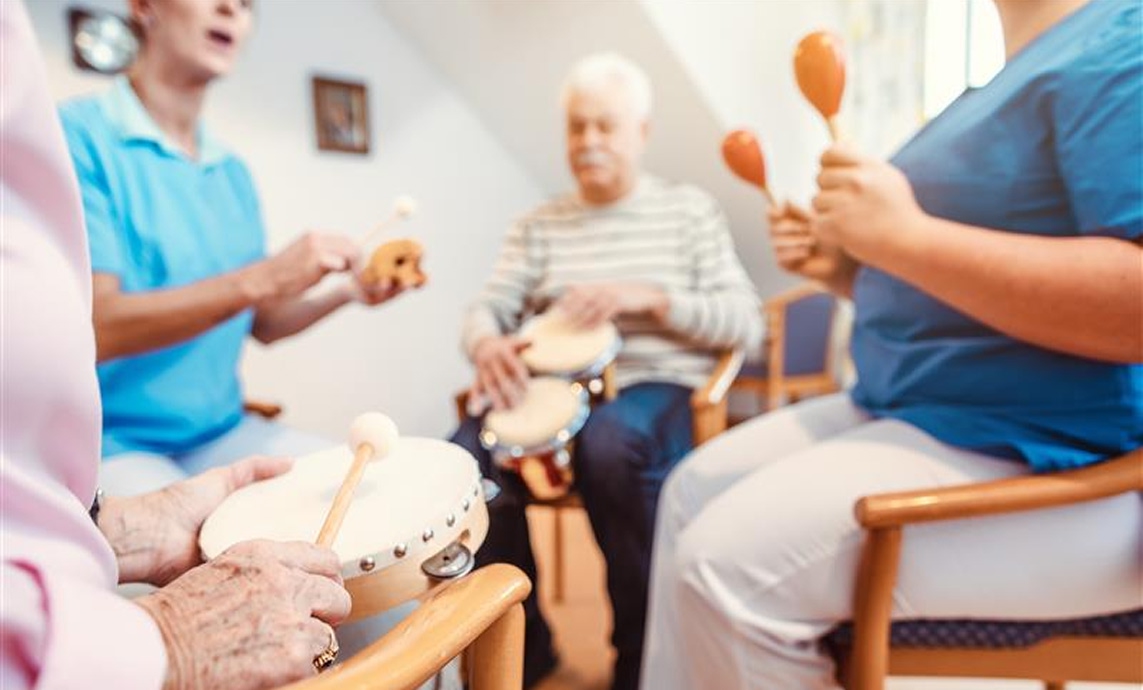Education
How Seasonal Depression Can Affect Seniors—And What You Can Do to Help

As we move into the holiday season, the number of daylight hours are dwindling. Shorter days with less sunlight don’t just impact the number of active hours in a day—it can also trigger seasonal affective disorder (SAD) for many people. Seasonal affective disorder affects a wide range of people, and it typically cycles during the year, coming on in fall and winter months when sunlight is less available and waning as the spring days bring more sunshine into our lives.
Typically known as “the winter blues,” SAD is also more prevalent the further away you live from the equator, where the sun is weaker and may be less constant. While about 5% of people in the U.S. experience symptoms of SAD, those numbers are higher—rising to 10%—in the northern latitudes. Adult women are more prone to experiencing SAD, which typically begins between the ages of 20 and 30. But for older people who may not be able to get outside often, SAD can deeply impact their quality of life—and their health.
Fortunately, the Centers for Medicare and Medicaid Services (CMS) added SAD to their Tabular Index this year, allowing healthcare professionals to diagnose and appropriately treat the signs and symptoms.
The Signs and Symptoms of Seasonal Depression
Seasonal depression is more than just feeling a little blue—in fact, it can sometimes mimic the symptoms of major depressive disorder (MDD). In part, this is because a Vitamin D deficiency, which can happen when days become shorter and sunlight is not as available, can contribute to feelings of hopelessness and fatigue.
In general, people suffering from SAD often experience:
- Listlessness and a daily feeling of sadness
- Loss of interest in previously enjoyable activities
- Feeling sluggish or lacking energy
- Cravings for carbohydrates, which can lead to weight gain
- Difficulty concentrating
- Feelings of hopelessness, guilt, or worthlessness
- Oversleeping
- Thoughts of suicide
Some people also experience trouble sleeping and mood changes that include increased irritability, agitation, or anxiety.
Seniors with SAD and How You Can Help
Many seniors, especially those without a close circle of family or friends, can be negatively impacted by SAD. SAD may be more prevalent in the elderly simply because many are housebound or cannot safely go outdoors when there is ice or snow on the ground. Sometimes, a senior who has SAD may choose not to go outside even if it is safe to do so because they have lost enjoyment in the experience.
For homebound seniors or seniors in nursing care facilities, having daily exposure to sunlight can be helpful. If done in the company of a friend or family member, the combination of sun exposure and social contact can help elevate their mood and rebalance the chemicals that contribute to feelings of depression. If you are visiting someone in a care facility, consider:
- Opening blinds or curtains to bring more light into their living space
- Spending time with them in the brightest areas of the facility
- Taking them outside for a short walk or to sit if it is safe and comfortable
With the holidays in sight, planning some social activities can help seniors engage and feel connected. Some things to consider may include:
- Watching holiday movies
- Making or writing holiday cards or decorations
- Decorating a small tree for their room
- Singing Christmas carols
- Baking or sharing cookies and holiday treats
Don’t forget that you shouldn’t overdo it, though. Older adults often have lower energy levels and may be fatigued by too much stimulation. Suggest breaks where appropriate and, if your loved one is suffering from Alzheimer’s or another dementia, you may want to modify activities even more.
Brickyard Healthcare—Year-Round Care for a Higher Quality of Life
At Brickyard Healthcare, we know that the needs of our residents change throughout their stay with us. That’s why we are especially vigilant when the winter months arrive, bringing shorter, gloomier days and the possibility of SAD. We want our residents to experience the fullest, most enriching life experience possible, so we keep a close eye out for symptoms of SAD—and we provide a stimulating, engaging environment where they can easily connect with family, friends, caregivers, and one another.
As the holidays approach, please remember to include your loved one in your holiday activities. Also, consider becoming a volunteer at one of our care centers to spend quality time with residents and make their spirits bright. At Brickyard Healthcare, our long-term care centers focus on creating a happy, healthy, enriching experience for all our residents, during the holidays and beyond. If you want to learn more, please call us at 855-855-8113 or contact us here.


